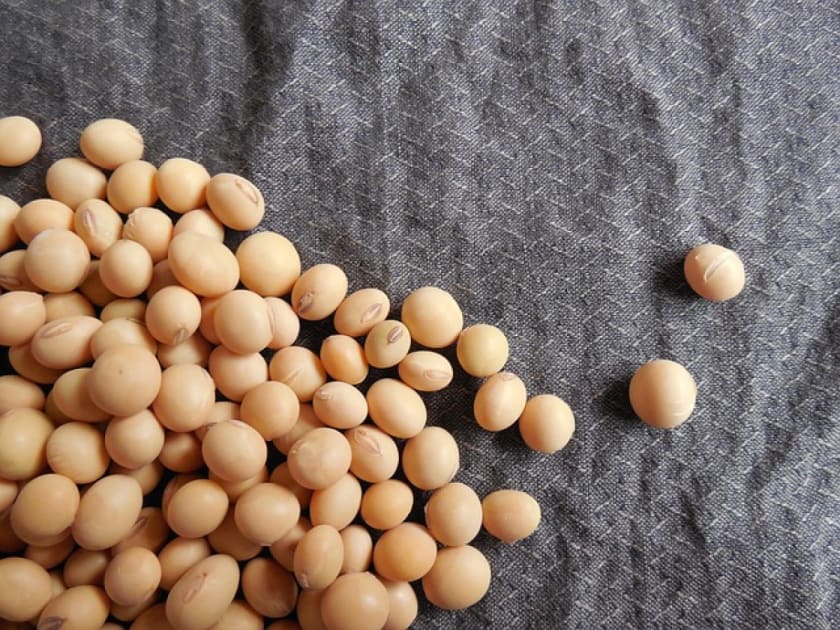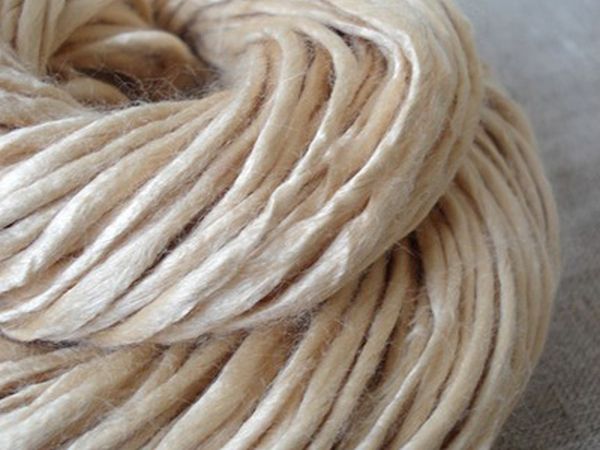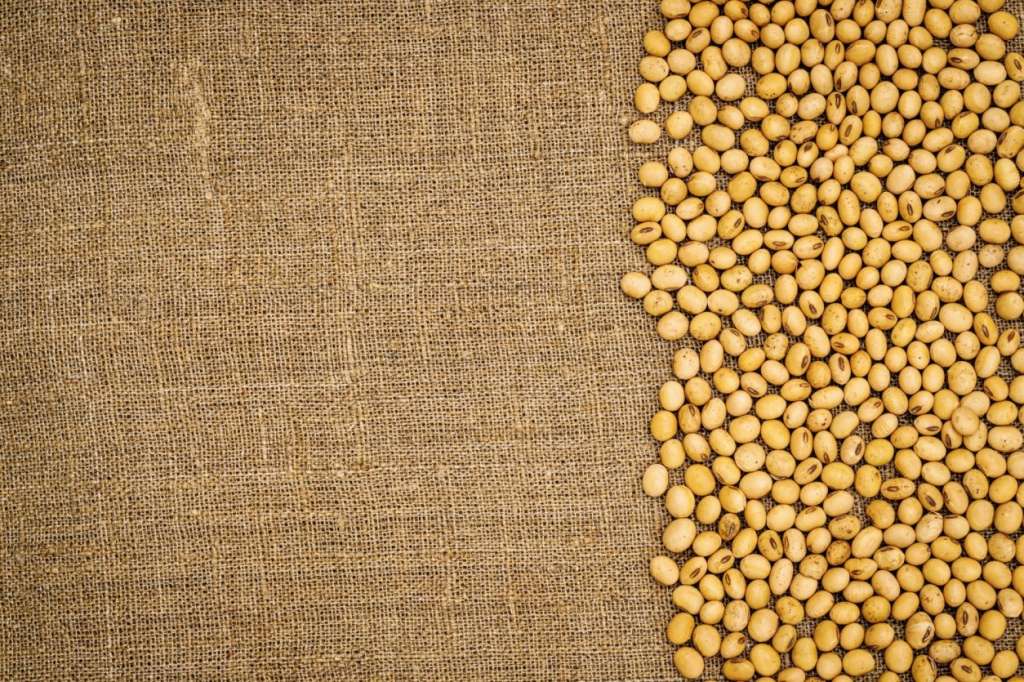Everything To Know About Soyabean Fibre



With the fashion world moving towards sustainability, more and more environment-friendly, sustainable alternatives are coming into the picture. Sustainable apparel is never going out of fashion. It is the need of the hour and the future.
The sustainability of textiles is a vital term in today's textile industry. It indicates environment-friendly materials, fibres and fabric. Sustainable fabrics reduce the problem of textile waste in the modern textile industry. Sustainable fibres are natural fibres that come from renewable resources and are biodegradable. The process of apparel making from sustainable fibres requires less water, less energy & is chemical-free. Some examples of sustainable fibre include jute fibre, banana fibre, and soybean fibre.
What is SoyBean Fibre?
Soybean fibre or Soy protein fibre (SPF) is also known as vegetable cashmere. It is a popular sustainable fibre and is the only protein fibre made from soy cake.
- It is a cream-coloured natural fibre that is ultra-soft.
- Its physical characteristics are similar to synthetic fibres.
- When soya bean fibres blend with other fibres, it can make a big difference in the resultant textiles’ properties such as gloss, comfort, absorbency, strength, and shrinkage. For instance, mixing soy fibre and cashmere provides easy-care and smooth quality. It suppresses shrinkage and facilitates maintenance.
- As a silk blend, it prevents the fabric from sticking to the skin when wet and improves the properties of silk.
- Also, soybean fibre is a renewable vegetable protein fibre. Its 16 amino acids are healthy and nourish the skin. It is an active fibre that has the characteristics of many natural and synthetic fibres.
How is Soy fibre made?
Soy fibre comes from the protein contained in soybean hulls. The process used to make soy fibre varies from manufacturer to manufacturer. The best method is to limit the chemicals needed to render soy protein into usable fibre.
Here is an overview of the steps a textile manufacturer takes to produce soy fibre:
1. Soy Protein Separation
Soybean fibre manufacturers use natural processes to separate the protein found in soy hulls from other compounds. It is also possible to extract protein directly from soybeans. Soy husks are useless, but soybeans have a significant market value.
2. Degradation of protein
Soy protein is not suitable for making fibre in its natural state. To make soy protein pulp suitable for fibre production, it must first undergo a granulation process. Textile manufacturers often use alkalis to achieve this. Alternatively, textile manufacturers can use natural enzymes to bring soy protein to the desired state for fibre processing. None of these processes harms the environment in any way. Most alkaline and enzymatic soy protein treatments also include the application of heat.
3. Extrusion through the spun
The manufacturer extrudes the slurry obtained through the spun after getting the soy protein in the desired state for fibre production. After cooling and drying, the resulting fibre stabilises and is ready for fibre production. To improve durability, manufacturers often expose soybean fibre to formaldehyde treatment.
Certain soybean textile producers have begun to use polycarboxylic acids instead of formaldehyde. Many manufacturers choose not to expose the fibres to the finishing process completely. But the resulting yarns are less durable and more prone to wrinkling.
4. Spinning
Next, the soybean fibre is spun into a yarn. Since the soybean fibre is relatively delicate, manufacturers often dye the finished yarn without using any bleach.
5. Weaving
The spun yarn can then be woven into long strips of cloth. This bolted fabric goes to apparel or other textile product manufacturers. It then goes for the production of consumer products.
Properties of Soya Bean Fibre

Soy fibre is sensitive to moisture, making it low in strength. It has fineness, high tensile elongation, low specific gravity, and a high alkali and acid resistance. It is pretty similar to other natural fibres like wool and silk.
Soy bean fibre is much cheaper than silk (about one-third the cost of silk) and can partially replace silk. Its moisture absorption performance is comparable to that of cotton, and its air permeability is much better than that of cotton, ensuring better comfort. Soy protein fibre (SPF) has a high initial modulus, low boiling water shrinkage, and good fabric dimensional stability. The anti-wrinkle performance is also outstanding, and it is convenient and quick to clean and dry. Soy protein fibre (SPF) has a good affinity for human skin.
The natural colour of the soybean fibre is pale yellow, much like the colour of silk. It has good light fastness and perspiration fastness. Compared with silk products, it has good dyeing brightness and dyeing fastness. Pure Soybean Protein Fibre (SPF) fabric has a natural and pure colour, rich surface fluff, no pilling, excellent hand, drape, and softness. The original condition of the product has good dye permeability and discolouration resistance.
How is soy fabric used?
Soybean fibre can be used as any other textile. Presently it is used to manufacture clothing and accessories. The airtightness of this fabric also makes it a good choice for sports clothing. However, the low durability of the soy tissue limits the popularity of these textiles in this category.
Because of its softness, soybean fibre serves as an excellent choice for manufacturing children's clothing and T-shirts for people of all ages. This softness also makes soy tissue desirable for upholstery. The fabric made of soybean protein fibre has a silky lustre. Its drape gives an elegant feeling. The textile made of high-count yarn has a clear texture. It is suitable for high-end shirt fabrics. The woven fabric is made of soy protein fibre, soft and smooth to the touch, light in texture, with a silk and cashmere blend.
How much does soy fabric cost?
Soy fabric's cost is generally comparable to low-priced synthetic and natural textiles such as cotton and polyester. The novelty of the bean structure may drive the price of this textile material to the higher side. Additionally, the cost of producing the bean structure is much higher than manufacturing similar natural and artificial fibres. However, with technological advancements in the field of textile manufacturing, the prices are expected to come down.
What are the different types of soy fabrics?
The shape of the soybean dough varies slightly from manufacturing process to manufacturing process, but this textile has primarily universal characteristics. Here are some examples of the types of soybean dough available:
1. Pure soy fabric
Pure soy fabric is processed soy protein that is stretchable, breathable and has a high gloss finish. However, its shelf life is relatively short, and dyeing pure soy fabric can sometimes be challenging.
2. Soy-cotton blends
Many manufacturers commonly mix soybean fabric with cotton to improve its durability. Blended fabrics made from soy-cotton retain the silky sheen of pure soy fibres while inheriting the strength of cotton. For this reason, apparel manufacturers often use soy-cotton blends to create athletic apparel.
3. Soy-wool blends
Fabrics made from a blend of soy and wool retain the elasticity and softness of soy fabric while retaining wool's insulating and durable properties.
What are the applications of Soy Fibre?

One can primarily use textiles made out of soy fibre to manufacture products that are worn close to the skin, such as:
- Undergarments
- Sportswear
- Children's & Infants Cloth
- Bed Sheets
- Towels
- Sleepwear
- Blankets
Conclusion
Soy protein fibre is a healthy, convenient, and green fibre that can serve as an alternative to synthetic fibres in today's time. Soy protein fibre has superiority over natural fibres and has the physical properties of synthetic ones. It has excellent potential for middle to upper-class clothing in the textile industry. Its primary raw material is soy protein, which is inexpensive, and often abundantly available.
The best apparel is always made of the highest quality fabric. It is hard to find sustainable, good quality clothing at a reasonable price these days. Fashinza is a clothing manufacturing platform that helps clothing brands create collections by linking with their suppliers. It manages the entire production process from design to delivery. Brands just need to place an order, and Fashinza will take care of everything else. So, the next time you want to get your apparel manufactured, visit Fashinza. You will not regret it!



















